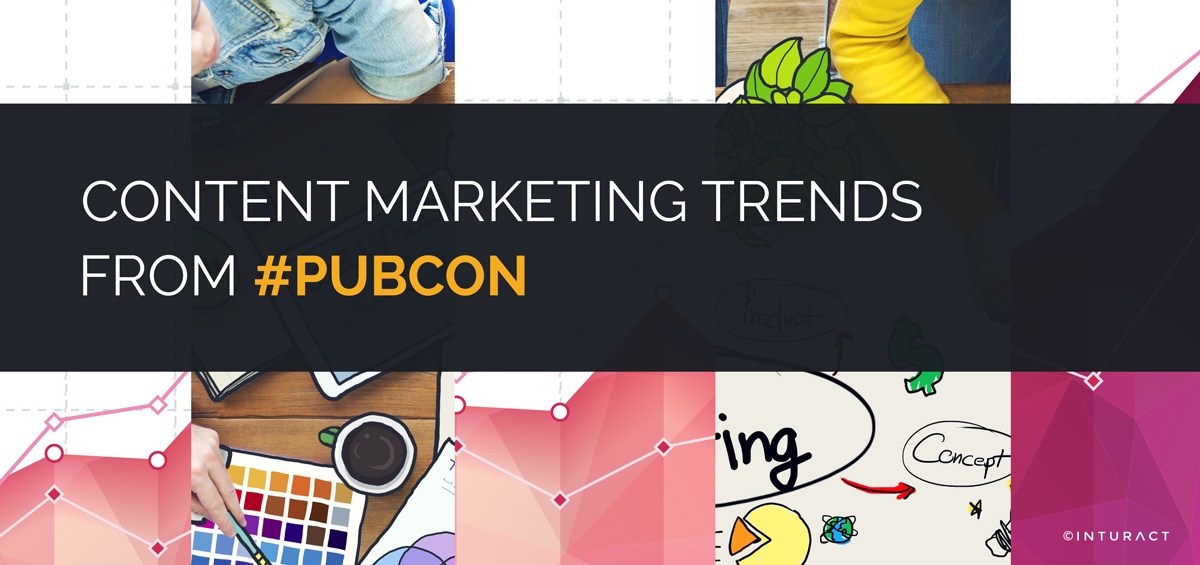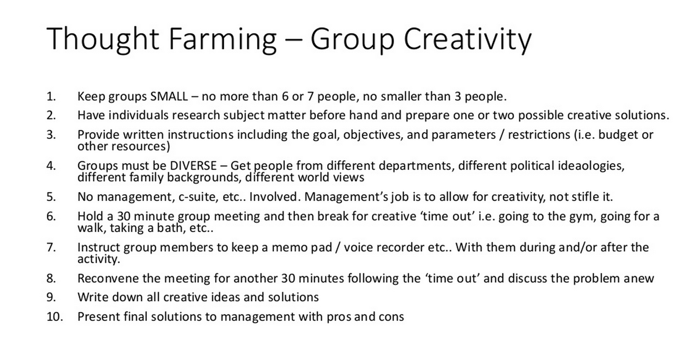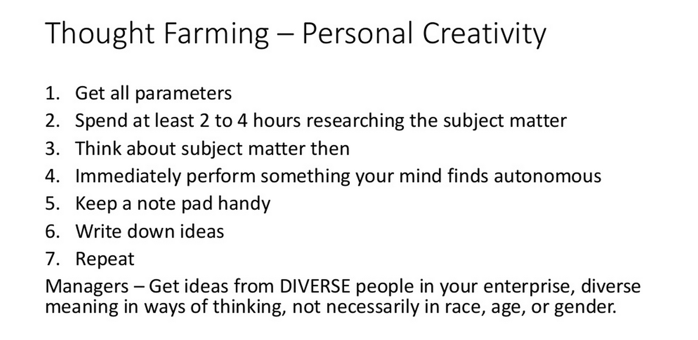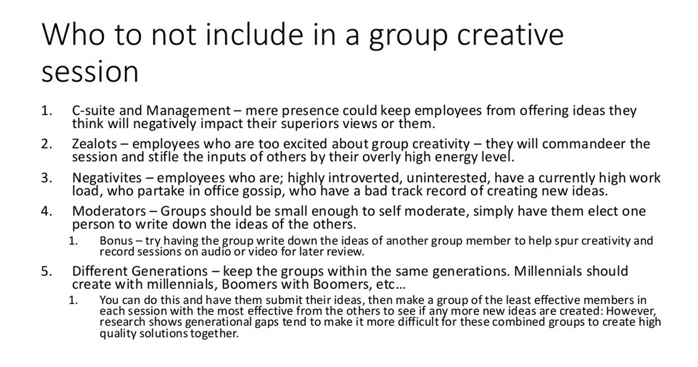 The second day of Pubcon 2015 was a success. One of my favorite presentations was Content Marketing Excellence, where we were treated to three speakers in one session. There was so much information to digest in an hour sitting but luckily, I’ve broken it all out for you here. Without further ado, here are the top takeaways from three of Pubcon’s content marketing speakers.
The second day of Pubcon 2015 was a success. One of my favorite presentations was Content Marketing Excellence, where we were treated to three speakers in one session. There was so much information to digest in an hour sitting but luckily, I’ve broken it all out for you here. Without further ado, here are the top takeaways from three of Pubcon’s content marketing speakers.
Eric Enge: Insights to Create Great Content
Eric Enge is the founder of Stone Temple Consulting and hosts a podcast about digital marketing. He opened with an intriguing question, "Do we read the articles we share?” Enge went on to argue that the common articles online have relatively low read time compared to shares and even more so, there’s very little correlation in social activity and links.
How the Pearson Correlation Coefficient Measures Good Content
Eric explained this and discussed the Pearson Correlation Coefficients where a coefficient of -1 means no correlation, having a coefficient of .3 or higher is a good correlation and anything above 1 is indicative of a high correlation. Eric uses a sample group of 100,000 article posts in a survey to examine the correlation between the number of shares and links posts received.
Of the group, there was a .011 correlation. Long story short, the survey concluded that most content gets shares or links, but they don’t get both.
Length Isn’t Enough for Success
So this raises another question, “Who gets both?”
- Longer, quality posts
- Opinion forming journalism posts
- Data-driven research posts
The study showed that longer posts received more shares and links. But that’s is only half of the battle. Content needs to be high quality and it needs to answer your audience's questions. Eric recommended posting one of these in-depth quality articles a month rather than four short blogs a month.
Setting Content Marketing Goals
Eric transitioned to content marketing goals to focus on and explained how to achieve them.
Marketing Goals:
- Build your reputation
- Grow visibility
- Grow audience
- Get some links
Eric described today’s online environment as an ecosystem. Meaning, you have to analyze it to understand it. Once your content is on your site, how and where are you promoting it? From those platforms (Facebook, Twitter, etc.), what relationships are you building? Who’s helping you promote your content?
Eric concluded that when strategized effectively, working the ecosystem will ultimately drive links, increase your social media presence, get subscribers back to you, build your audience, get retweets from influencers, and help you build visibility.
Joe Youngblood: The Neuroscience of Content Inspiration
Joe Youngblood is the founder of Winner Winner, Chicken Dinner. His presentation explored the work of Dr. Rex Jung, Dr. Arne Dietrich, and others to help build an experimental construct for personal and group brainstorming which can be utilized to develop high-quality, creative content.
Neuroscience and Psychology of Creativity: How the Brain Functions
Joe’s research uncovered that neuroscience says there’s no such thing as a left or right brain. All normal functioning human adults have the mental ability to be both creative and analytical. The issue is with the way in which we use our brains as we grow older, focusing more on analytical tasks than creative inspiration. With training, adult brains can grow to be more creative.
The Transient Hypofrontality Hypothesis
Joe introduced the “Transient Hypofrontality Hypothesis,” which consists of three sections of your brain that are involved in coming up with creative ideas. Those sections are:
- Executive Attention Network - This is a network of areas within the brain. This network allows a person to focus on one task.
- The Default Mode Network - This is also a network of areas within the brain. This network allows a person to freely consider alternate possibilities using imagination.
- The Salience Network - Is a network that transfers ideas between the Executive Attention Network and the Default Mode Network.
Do Your Research
Joe stated that the first thing you need to do to create high-quality content is to know what you’re talking about. To do this, you must immerse yourself in the subject matter and research as much as you can if you are unfamiliar with it.
Joe used potatoes as an example to illustrate the research process. With the resources available online, Joe was able to find an abundance of facts and stories about potatoes, and my personal favorite from Mr. Youngblood’s presentation is the giant potato reference (see the slides).
Some of the tools Joe used to find information on potatoes were:
These are a few of an endless list of tools available online to see what people are saying about your topic. Taking the time to understand a subject that is new to you and utilizing your research is a surefire way to create content that is informative and interesting to your audience.
Brainstorming vs. Thought Farming
Joe went on to discuss how the traditional model of brainstorming (which has been used for over 70 years in most agencies and in-house departments) has been proven by psychology and neuroscience to be ineffective at creating the highest quality content possible.
Instead, Joe suggested a new framework for generating high-quality creative content ideas. Joe called his method, “Thought Farming.”
One method to generate content ideas is to conduct personal creativity.
Another method explained was to hold a brainstorming session that encourages group creativity. 
Joe shared a list of what not to include in a group creative session and explained why he suggested to not include them in your group creative sessions:
Visit Joe Youngblood’s new website, Be a Creative Marketer, to learn more about his theories on becoming more creative.
Grants Tilus: Video Content With Hangouts on Air
Grant Tilus is an Associate Inbound Marketing Manager at Collegis Education. He gave us a pivot from the other two speakers with information about using video in content marketing.
Grant opened his presentation by presenting statistics which prove that people are watching more videos to find their information online, to the point where YouTube is changing lives. As video continues to grow, marketers need to find ways to leverage it to optimize our content strategy.
Grant acquiesced that we are not all videographers. Budgets are tight and tools and time are scarce. But with the resources available to us like Google Hangouts, these are no longer excuses to not participate in video marketing.
Using Google Hangouts for Video Marketing
Grant shared his knowledge on Hangouts on Air and explains why we should all learn how to use it.
Best Buy, colleges, sports team, real estate firms, publishers, keynote speakers, they’re all doing it and doing it well.
What information can you create video content for?
- Interviews
- Discussion panels
- How to’s
- Repurpose your content
- Q&A's
- Thought leadership
- Product demos
- Promoting cause awareness
- Raising an issue
- Promoting a lifestyle
- Customer testimonials
But before you start, ask these questions:
- What are our KPIs?
- Who are we targeting?
- What phase of the funnel are we creating content for?
- What’s our budget?
- How can we be differentiated?
- Are we comfortable being transparent?
- Do we have internal support?
To save us some time and possibly some embarrassment, Grant listed the top 10 Hangout Air fails for us to learn from:
- Forgetting to optimize for YouTube:
- Add metadata and input channel keywords
- Not taking control of technology. Don’t fall victim to:
- Shaky camera
- Bad network bandwidth
- Bad WiFi
- Not understanding what apps are available to you
- Not taking advantage of screen share
- Neglecting to test equipment:
- Especially if interviewing a guest, test the equipment prior to meeting to make sure everything's running smoothly.
- Choosing an awful host - A great host should:
- Be engaging
- Be cool under pressure
- Be knowledgeable of the topic
- Be able to control the conversation
- Be fully invested in the success of the project
- Figuring you’ll just wing it:
- Develop your structure
- Follow a program outline (not a script)
- Give the program to your guest beforehand
- Avoid inside jokes and rabbit holes
- Undervaluing the hangout participants:
- Don’t be the main one talking.
- Understand individual authority vs. organization authority - who’s bringing in the talent? If it’s your company, use that authority to build your reputation. If you’re dealing with individual authority, utilize that person's credibility to build your videos authority.
- Participant training - get a good angle and look at the camera (i.e. make sure their glasses don’t have a glare).
- Your video is a dead end. Don’t forget to:
- Add CTA
- Drive viewers to online assets throughout and at the end of your video
- Answer all of your audience's questions
- Thinking view count are all that matter:
- Focus on your retention, engagement, and participation too.
- Moving on before the work is done, Don’t forget to:
- Crop your video
- Edit and optimize on the back end
- Promoting your content.
- Repurposing with purpose - if it doesn’t make sense to repurpose it, then don’t.
- Missing opportunities to build your brand:
- Strengthen your personal brand
- Showcase your organization's brand
- Brand your background
Content Marketing is a Big Topic
Whew! That was a lot of information. Bottom line, there is a lot going on with content marketing. Following blogs, attending conferences, and following through with trainings are all great ways to keep up.
Have you subscribed to our blog yet? We share the latest inbound marketing tips and tricks every week. Check it out, below.




